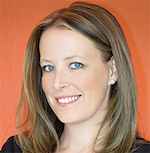 |
| Samantha Jacobs |
In 2020, a pandemic flipped the world upside down. As a PR agency rooted in travel and tourism with a deep passion for those we serve and what we do, we had two choices regarding how we could handle the most difficult challenge we’d ever faced. We could sit back and watch to see what would happen, or we could leverage our innovative mindset to create a new way of doing business that would evolve with the times and set us—and our clients—up for future success.
So, what did we do? We adapted, fast. With nearly every aspect of our lives transformed, we decided to flip the traditional agency model on its head, redefining our business, but doing so in a way that stayed true to our core philosophies. We evolved our approach in a way that showed our clients—and the industry at large—that we believe in the future of travel, we believe in them, we’re here for the long term, and by sticking together, we can come out of these difficult times stronger than ever.
A flexible client/agency model
As an independent, family-owned company, Hemsworth has the ability to be nimble and adapt with the times. As the reality of the pandemic set in last spring, we knew we had to get creative in terms of how we support the brands and companies that rely on us to share their stories. While we’ve always provided tailored programming, our pandemic evolution became focused on flexibility. We developed an entirely new structure that innovated the way many have traditionally thought about the client-agency relationship, launching our COVID-19 PR Stimulus Program.
| This article is featured in O'Dwyer's July '21 Travel & Tourism PR Magazine (view PDF version) |
From upfront pro bono support to those that qualify and reduced retainers to a “Flex Pay” contract and the removal of set hourly fees or minimums, this initiative was a first-of-its-kind solution. It was a risk, but we suspected there was a need for something different, and we went for it. The industry took note, and we immediately saw that we were right in our thinking. Resources on the client side were being rapidly depleted. Brands were losing their in-house PR teams. Agency budgets were no longer what they once were. There was a need for quality agency resources under a more flexible structure, so that travel-centric businesses could get through these difficult times without completely abandoning their PR strategy.
Reaching consumers in innovative ways
Just as we were challenged to adapt our business in the midst of a pandemic, so were our clients. Hotels, resorts, tourist boards, cruise lines, travel brands … those we spoke to in the early pandemic days—and even much later—found themselves challenged by the desire to reach their target audience in a thoughtful, engaging and yes, affordable way.
Even while travelers were sheltering in place at home, we knew from the conversations we were having with top media from around the world that people were craving inspiration and finding themselves overwhelmed at times by an increasing sense of wanderlust. As a result, virtual armchair tourism was born. Some might say this was a trend or short-term necessity, but we believe it’s something that’s here to stay. Creating compelling branded travel and tourism campaigns that inspire travelers from home? Yes, please! When travelers are ready to go, they will. Nothing is quite like having your toes in the sand at your favorite beach resort or setting out to explore a new city on a bucket list adventure.
Our clients have had the unique opportunity to connect with travelers—and media—on a more personal and authentic level by providing a mental escape and establishing a deeper bond that will position them at the forefront for the industry’s rebound. We’ve had fun working with our clients to develop unique, cost-effective ways to build anticipation and demand, and we believe this is a concept to be embraced long-term.
Delivering content to media in new ways
Our approach to flexible communication with travelers, and creating unique client programming, carries over to the way we communicate with media, as well. When COVID hit, the media landscape was also turned completely upside down. Staff writers with whom we had longstanding relationships were laid off and found themselves embarking on freelance careers. Many publications suspended their print editions and sadly, a few of our favorite titles shuttered completely. Media corporations changed their approach to working in the office as well, so sending media materials or mailers in a traditional sense are no longer a dependable option with so many journalists and editors now working remote.
As the world begins to re-open, travel media are starting to have an appetite to get back out there, participating in hosted or individual press trips. But again, the impact of a pandemic has had a ripple effect. Many of those same journalists are still restricted by their parent corporations’ travel policies and rules around vaccines. As a result, we’ve begun embracing a new way of communication on behalf of our clients, with virtual press conferences and yes, even virtual press trips. Though challenging, finding new ways to communicate with the media has helped personalize our approach even more. And our clients are winning as a result.
Offering employee flexibility
As we navigated our way through the pandemic, we learned that flexibility was key not only for our clients and the media, but also for our team. According to a recent survey conducted by Wakefield Research for Graebel Companies Inc., nearly three in five workers (59 percent) said they’re more willing to relocate for work now than they were prior to the pandemic. In fact, 80 percent of workers would relocate during the pandemic, and there’s a growing interest in relocation post-pandemic as workers pack their bags and set out to explore a new world of opportunities.
We’ve always offered work-from-home days and relocation options but in the past, we were a bit hesitant to embrace the concept of full-time remote team members. That said, our thinking has evolved and again, we find ourselves committing to a flexible mindset. Travel is coming back with a bang and as we’ve worked to build an incredibly strong team to support our clients’ post-pandemic growth, we’ve done so with a new way of thinking. We’ve adjusted our policies and now allow our team to work from any location. We’ve hired team members from other markets with remote starts, allowing them to thoughtfully plan their relocations. As a result, we’ve added some incredibly talented new team members in the process, and we’ve added boots on the ground in new locations as well.
As an industry, we’re facing a new world. The way we live and work has drastically—and, in some cases, permanently—changed. It’s time agency leaders embrace a new way of thinking about their service model, working in the spirit of absolute partnership, showing our clients, our media friends and our team members that we’re here for them in any way they need us to be. Flexibility is critical. The same way of doing things won’t cut it anymore. Evolution needs to be about more than just the services you offer, the industries in which you operate, or the talent you’re adding to your team. Evolution—and innovation—is a mindset, rooted in a flexible way of partnering with—and servicing—those around you.
Looking back, innovation, flexibility and adaptivity are three core themes for Hemsworth over the past year, and we firmly believe they are themes that should carry through any agency in our sector as we enter a new world.
***
Samantha Jacobs is Founder and President of Hemsworth Communications.


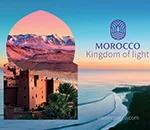 Weber Shandwick is providing PR and marketing communications services to the Moroccan National Tourist Office in New York.
Weber Shandwick is providing PR and marketing communications services to the Moroccan National Tourist Office in New York.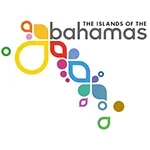 Finn Partners has filed its six-month contract with the Bahamas Ministry of Tourism, Investments & Aviation, which is worth $240K.
Finn Partners has filed its six-month contract with the Bahamas Ministry of Tourism, Investments & Aviation, which is worth $240K.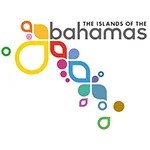 Weber Shandwick wrapped up its work for the Ministry of Bahamas at the end of 2023.
Weber Shandwick wrapped up its work for the Ministry of Bahamas at the end of 2023.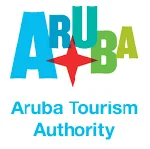 The Aruba Tourism Authority is boosting its budget 29.4 percent to $2.2M at Zeno Group, according to its 2024 contract, effective Jan. 1.
The Aruba Tourism Authority is boosting its budget 29.4 percent to $2.2M at Zeno Group, according to its 2024 contract, effective Jan. 1. As inflation continues to impact spending, consumers are revisiting their list of what they’re willing to spend more of their money on. Luckily for those in the travel industry, experiences seem to be trending up on the “splurge” list.
As inflation continues to impact spending, consumers are revisiting their list of what they’re willing to spend more of their money on. Luckily for those in the travel industry, experiences seem to be trending up on the “splurge” list. 


 Have a comment? Send it to
Have a comment? Send it to 
No comments have been submitted for this story yet.